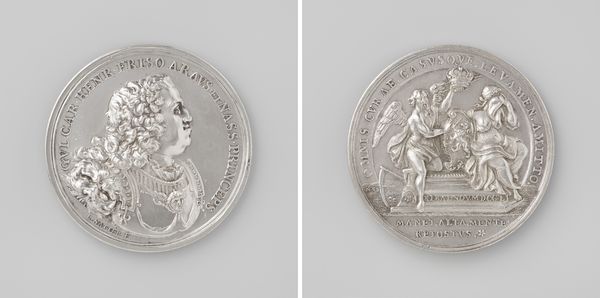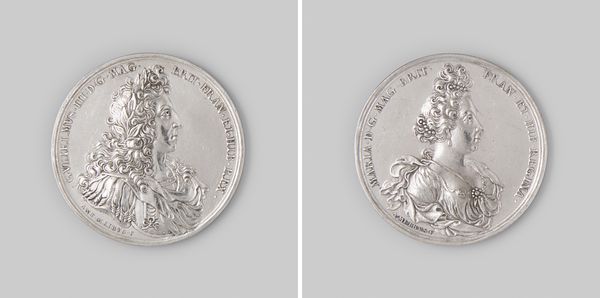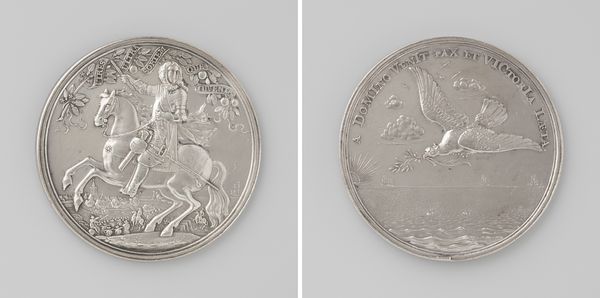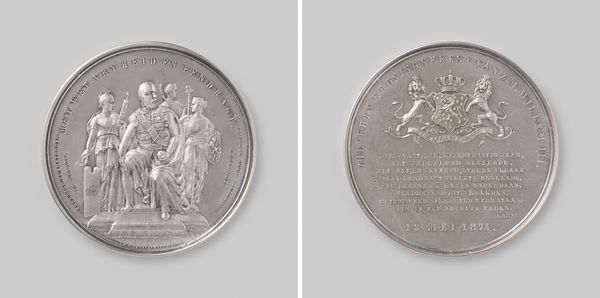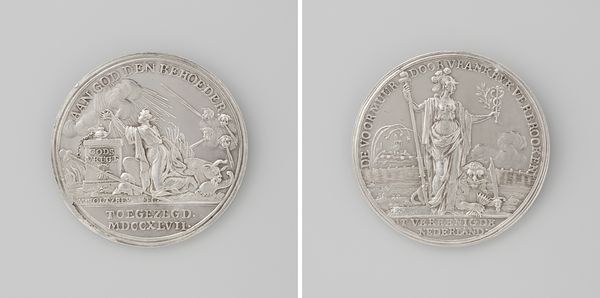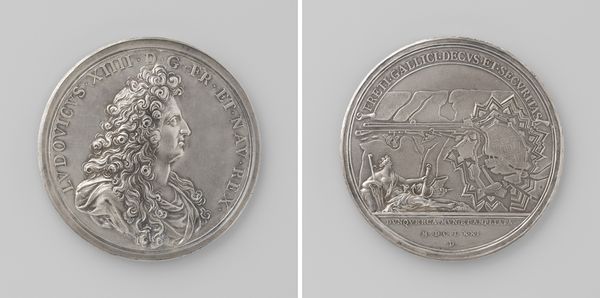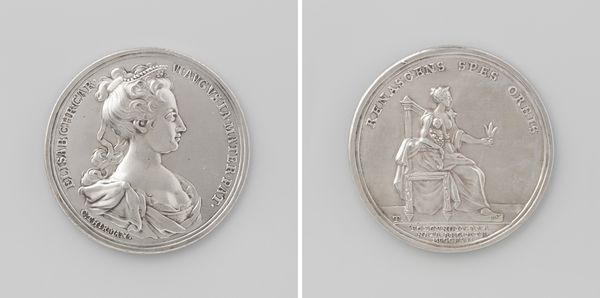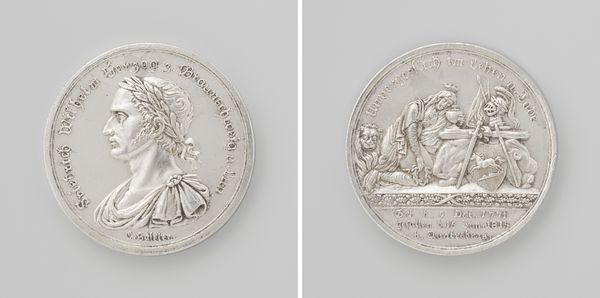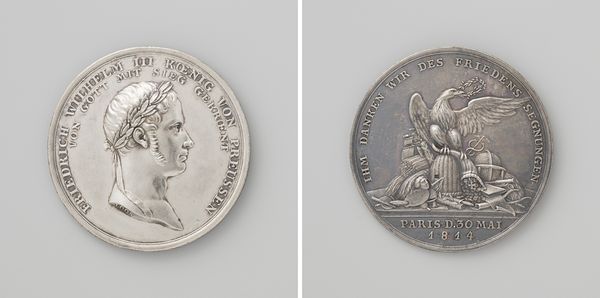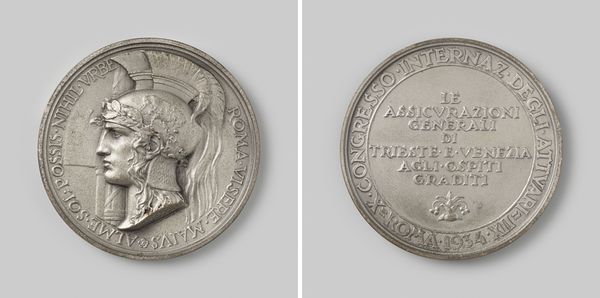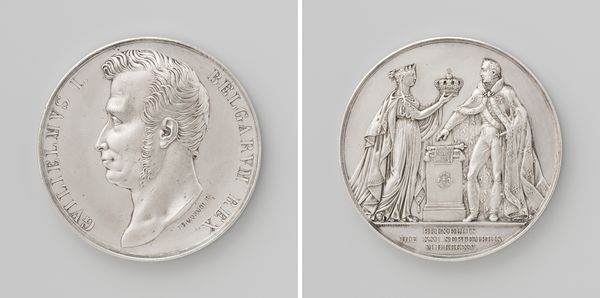
metal, relief, sculpture, engraving
#
portrait
#
baroque
#
metal
#
relief
#
sculpture
#
history-painting
#
engraving
Dimensions: diameter 6 cm, weight 95.81 gr
Copyright: Rijks Museum: Open Domain
Editor: Here we have a metal relief engraving, titled "Le Havre door de Engelse en de Nederlandse vloot gebombardeerd," which translates to "Le Havre bombarded by the English and Dutch fleet," created by Jan Boskam in 1694. The stark contrast in the metal really emphasizes the crisp details of both scenes. What do you notice about this medal, especially considering its historical context? Curator: Well, this medal offers a fascinating lens through which to view the political theater of the late 17th century. Medals like this one weren't just decorative; they were carefully crafted propaganda tools. The depiction of William III, looking every bit the invincible leader, immediately sets a tone of power and legitimacy. Editor: So, this wasn't necessarily about an artistic expression of an event, but more of an endorsement or a political statement? Curator: Precisely. The bombardment of Le Havre by the English and Dutch fleet was a significant moment in the Nine Years’ War. By commemorating it in this way, Boskam – and likely the patrons who commissioned the work – were seeking to shape public perception of the event and William III's role in it. Notice the inscription around the bull; it further contextualizes and perhaps even interprets the action itself. What do you think this imagery might suggest about the perception of the involved nations at the time? Editor: That's interesting! The cow seems an odd choice for a victory commemoration... perhaps they represented their enemies in an unflattering manner? Curator: Exactly! By using animal symbolism, this piece reveals much about national identity and the construction of the 'other'. And considering that these medals were often distributed and collected, they played a role in fostering patriotism and national pride. We see this in art today, but often disregard how it played out centuries before. Editor: This really reframes how I look at historical art! I never considered these objects as instruments of state power and social influence before. Curator: Indeed. Examining art through the lens of its political and social function opens up a whole new dimension of understanding.
Comments
No comments
Be the first to comment and join the conversation on the ultimate creative platform.
